Can the Apple Watch Ultra 3 Meet a Serious Endurance Athlete’s Needs?

Photo: Apple. The Apple Watch Ultra 3 starts at US$799
My first inclination that Apple was getting serious about endurance athletes came during a call I had with some of the Apple Watch product team in the summer of 2022. Earlier that year I’d written a feature on the Apple Watch that explored a tendency I’d seen with a few athletes I was coaching. Even though the Apple Watch didn’t make sense to me as a dedicated sports watch, they were arriving at workouts with one on their wrist. I quickly learned that these athletes were much more interested in completing their rings every day, not to mention enjoying how easily the watch paired with their iPhones to enhance their daily activities, than being able to hit splits during interval sessions.
The Apple Watch of that time frame was fine for what I would call “general” fitness activities, but once you got serious and were, say, racing an IRONMAN, you needed to look elsewhere – and there were lots of options. Garmin, of course, led the pack, but there were other options from companies like Suunto, Polar and Wahoo, to name just a few.
As the reps described the new watchOS, it became clear to me that Apple was getting ready to offer something much more appropriate for endurance athletes. That fall I received an invitation to Cupertino for that year’s Apple event. Which is where I first got to see the Apple Watch Ultra.
A bigger screen, much longer battery life, Bluetooth connectivity and, most importantly, an additional button (don’t call it a “lap” button) meant that there finally was an Apple Watch that offered the kind of features any serious endurance athlete would need.
Since then I’ve spent a lot of time with the various versions of the Apple Watch Ultra on my wrist, graduating to the Ultra 2 a year later, and then the Ultra 3 after its launch this fall. Apple has steadily improved on virtually all aspects of the Apple Watch series over the last few years (especially on the health-tracking front), making it a reasonable training aid for most athletes. Battery life remains the biggest issue, though, especially compared to the competition. The last Garmin Fenix I reviewed had enough battery power to get me through a 10-day training camp and a four-day trip to the Sahara desert to cover the Marathon des Sables (where I used the Fenix’s flashlight extensively every night), and I still came back with days of battery life. That’s never going to happen with an Apple Watch. But does that mean you can’t use it if you’re an endurance athlete?
Apple Watch Ultra: The Basics
I’m going to do a separate article on the Apple Watch 11 and the differences between that and the Ultra 3, but there are a few basic aspects of the Ultra line that need to be pointed out before I get into more details on the Ultra 3. To provide the additional battery power (36 hours with up to 60 hours in low power mode), the Ultra and its 49 x 44 mm case has always been thicker than the Apple Watch, but the lightweight aerospace titanium case helps keep the weight down, while providing ample protection and a stylish, but tough, look. The first Ultra had a face that was 27 percent larger than the Apple Watch 8. In addition to the standard two buttons on the right side of the watch (OK, one of those also serves as the Digital Crown), the Ultra watches are armed with a third button on the left side – the “Action” button. Apple is right to point out this is much more than just a lap button as it can be customized. The default is to open up the workout app, and once you’ve picked your workout, it will also provide a “Precision Start” so you don’t have to go through the 3-2-1 countdown process before a workout starts.
“The great thing about Ultra is that the watch that can help you win a world championship is the same watch that can help you get to a meeting on time, listen to music, pay for the things you want to buy with Apple Pay or even take an ECG,” Jay Blahnik, Apple’s Vice President of Fitness Technologies, told me during an interview shortly after the 2022 IRONMAN World Championship. (That world championship he was talking about was my wife’s – she won in Kona that fall wearing my review Ultra model.) “I think what makes it so special is that while Ultra is the most capable and rugged Apple Watch ever, it’s still quintessentially Apple Watch at its core. It does all the things that you would expect it to do, even when you’re not having an adventure, going to the depths of the sea or competing in a long course triathlon.”
The first Ultra offered a number of important features for endurance athletes: improved GPS performance, running form metrics including vertical oscillation, stride length and ground contact time, the ability to create customized workouts, pacing capabilities and, for those looking to use the watch to track cycling metrics, the ability to connect a power meter through its Bluetooth capabilities. (And, yes, I am fully aware that all this was available in other sports watches at the time. Now, though, as Blahnik pointed out, you could get all these features in the world’s most popular smartwatch.)
Those into other outdoor adventures were equally as excited about the improved compass, along with the dive app for certified scuba divers.
Where the Ultra (and that year’s Apple Watch 8) really shone was with the health-tracking capabilities that included the ability to do an ECG, sleep tracking and more.
Over the next few years Apple would add a number of other features to the mix, including an automatic track-running detection feature, custom workouts and the ability to track training load. You can also view your cycling dynamics on your phone – probably not a feature aero-crazy triathletes are likely to use, but still an option. With a Bluetooth power meter added to the mix you could also get an automatic estimate of your FTP. In the pool the Apple Watch series was able to automatically detect strokes, count laps and get access to customized workouts.
OK, so if the original Ultra changed the game for Apple, where do things stand with the Ultra 3?
The Ultra 3
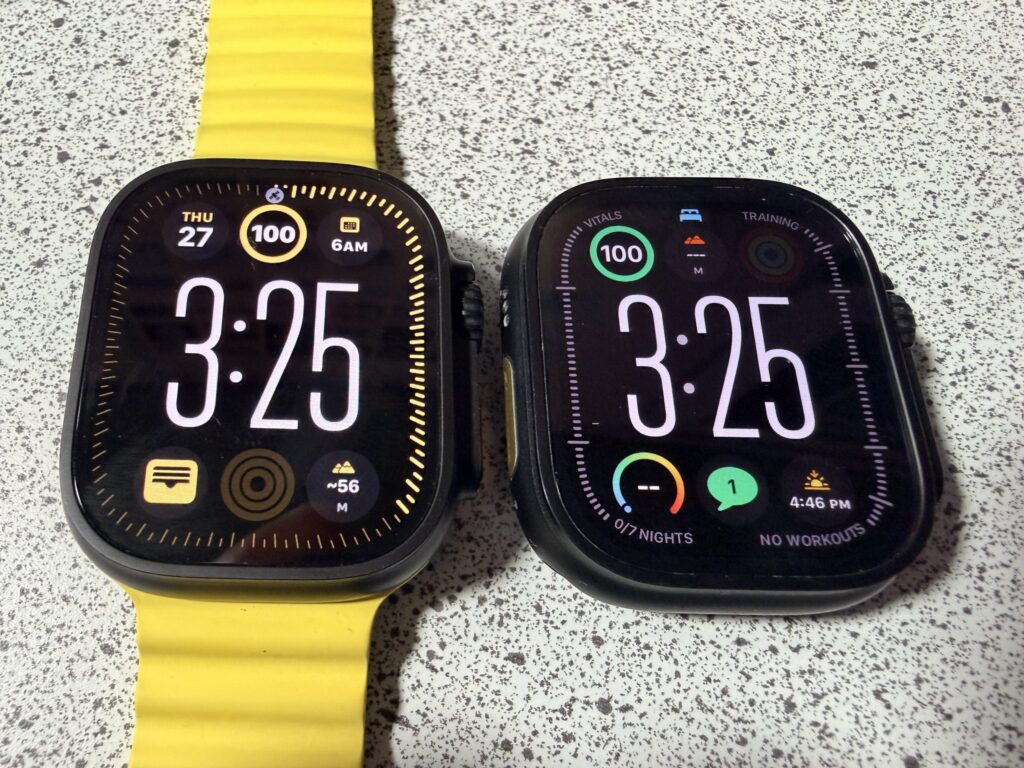
The Apple Watch Ultra 3 on the left, the Ultra 2 on the right. The case is the same size, but there’s some extra screen real estate on the new model.
With a quick glance it would be difficult to really see a lot of difference between the three iterations of the Ultra. Each successive model has managed to eke out a bit more screen real estate and, while last year’s Apple Watch 10 offered a slightly bigger screen than the Ultra 2, the Ultra 3 regains its lead on that front. Once again Apple added a bit more real estate without increasing the size of the watch – the display borders are 24 percent thinner. The new screen is not only the largest one Apple has ever made, but it also features LTPO3 and wide-angle OLEDs, which are “brighter when viewed from an angle.” While it’s not dramatically different to the Ultra 2’s screen, you will notice a difference when you make a quick glance at the watch – something you’re likely to do a lot while running or cycling.
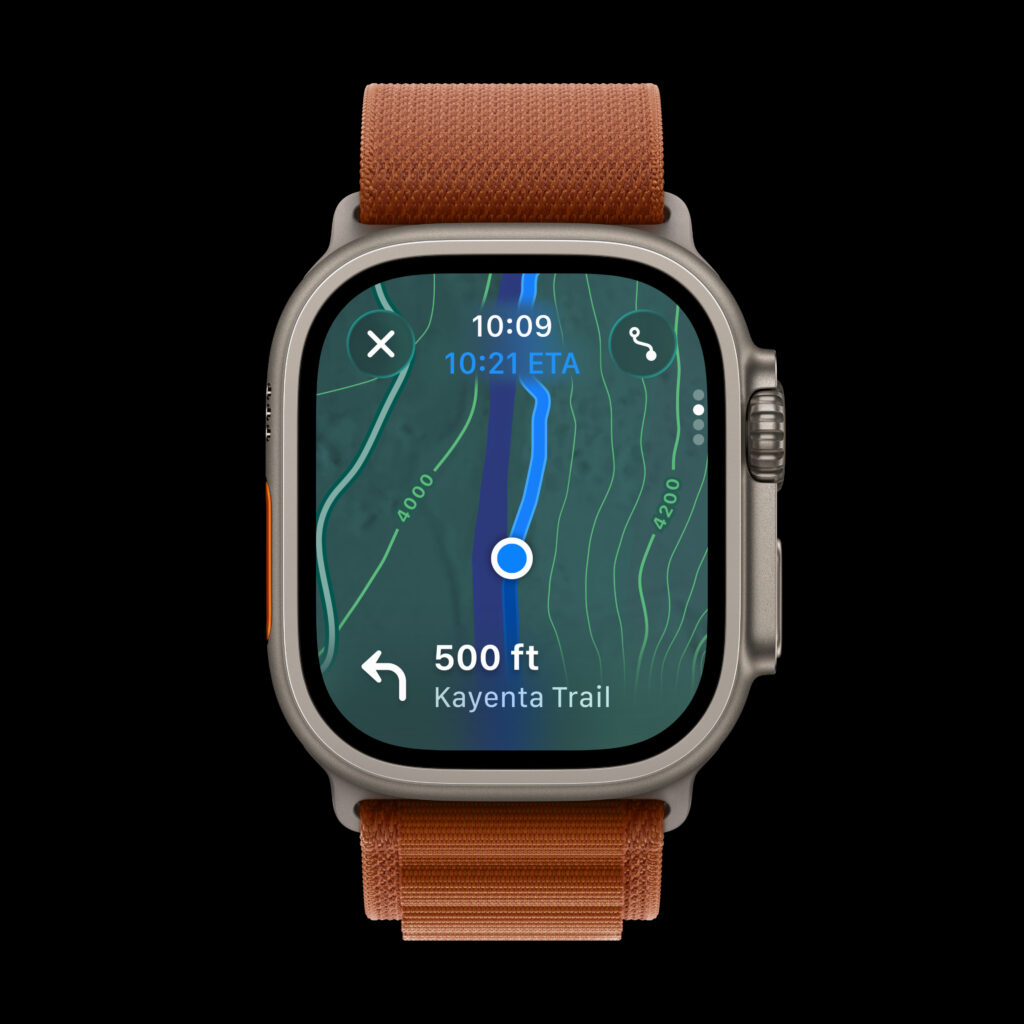
The larger screen makes it easy to see map information, and you can load maps offline, too.
The LTPO3 OLEDs allow a faster refresh rate, which allowed Apple to update the watch face and apps like the stopwatch and timer to allow for a ticking seconds hand, something I’ve immediately enjoyed when I want to time, say, a 30-second plank effort.
The GPS performance remains rock-solid and seems to track extremely quickly no matter where you are. (I didn’t notice any of the delays I typically experience when I arrived in a new country for the watch to find the GPS signal, either.) All the features that athletes have come to expect in the Ultra series remain, with some enhancements through the new hardware in the Ultra 3 along with watchOS 26.
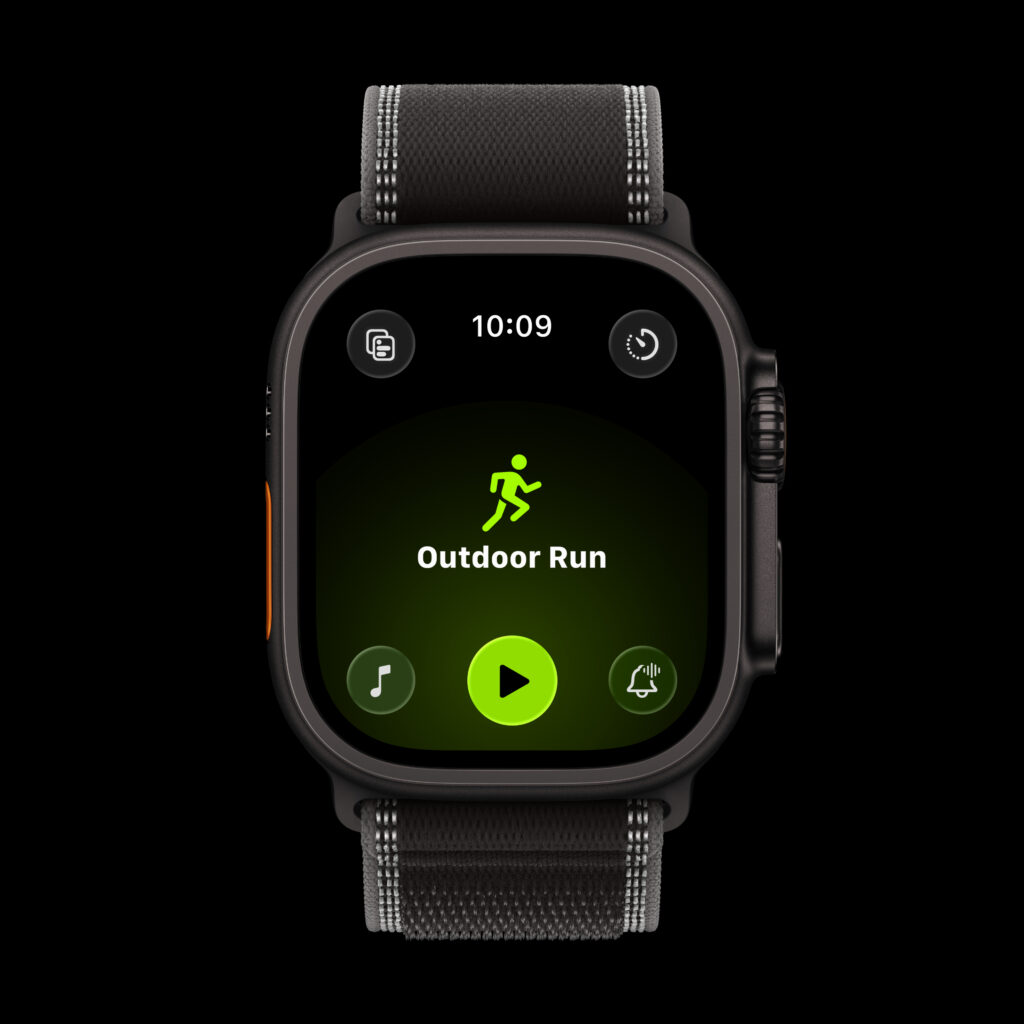
A new layout for the workout app …
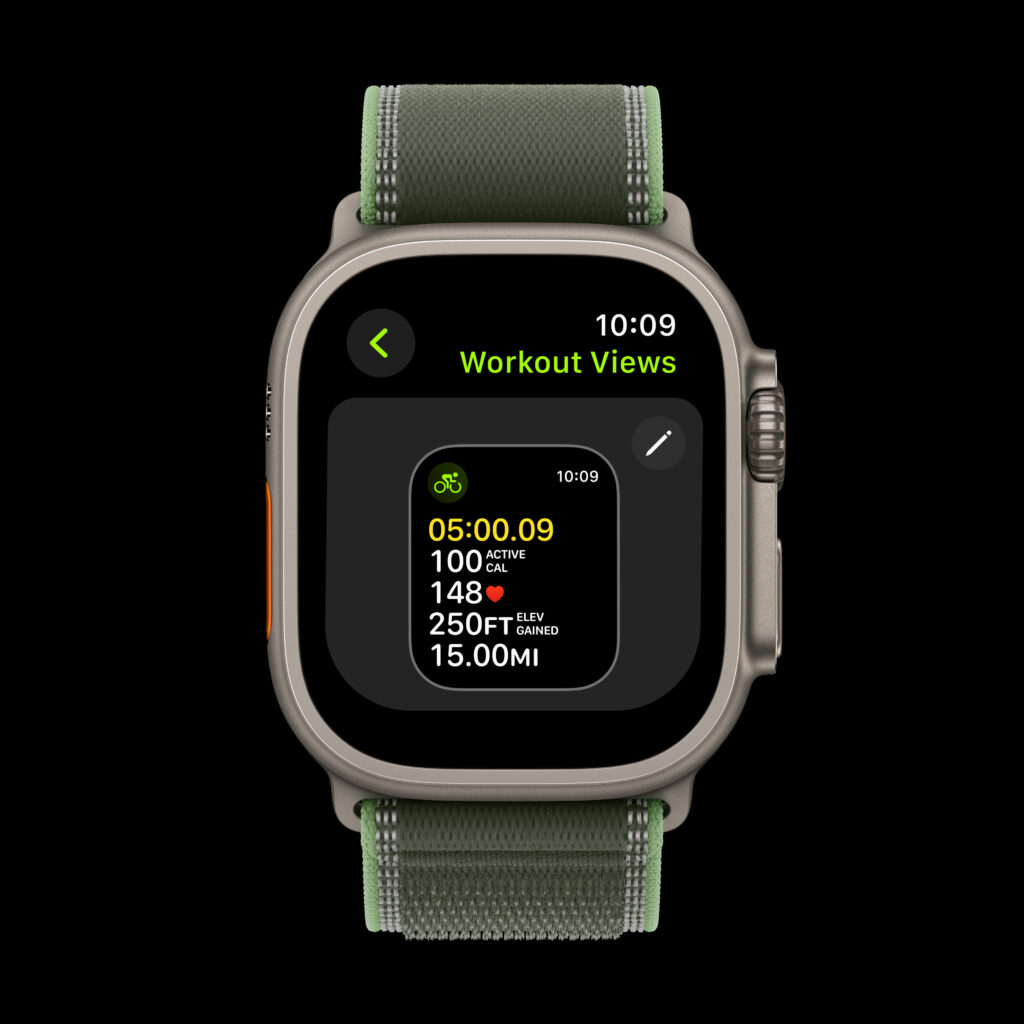
Makes it easier to customize workouts and workout views
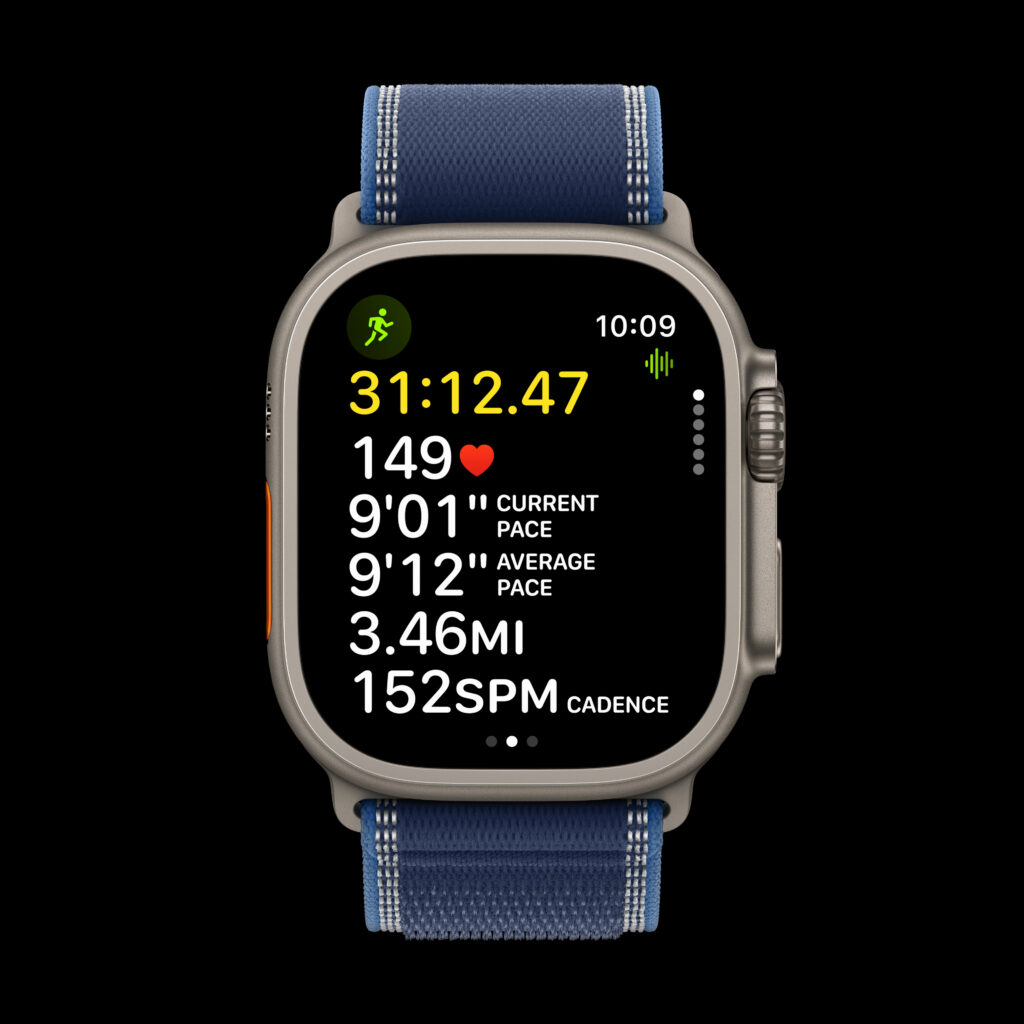
Included among that list is Apple’s new “Workout Buddy” which uses Apple Intelligence to analyze workout data and create personalized motivation cues throughout a workout based on heart rate, data, pace, distance and other metrics. (You do need to have an Apple Intelligence-enabled phone close by, though, which could be a deal-breaker for some.) The larger screen makes it even easier to create custom workouts on the watch, and you can customize the workout views, too. You can also create workouts in the fitness app of your iPhone and then access them on your watch. You can also set up music and podcasts to play when you start a workout, and if you use Apple Music, it will select the best music for you based on your listening habits and the workout type. In the pool the Ultra 3 can now even give you a “SWOLF” score (stroke count combine with the time it takes to swim a length).
An additional health feature was added to the Apple Watch mix in October – hypertension notifications. Data from the optical heart sensor analyses how blood vessels respond to your heartbeat, and works in the background to review data over a 30-day period and notifies users if there are signs of hypertension.
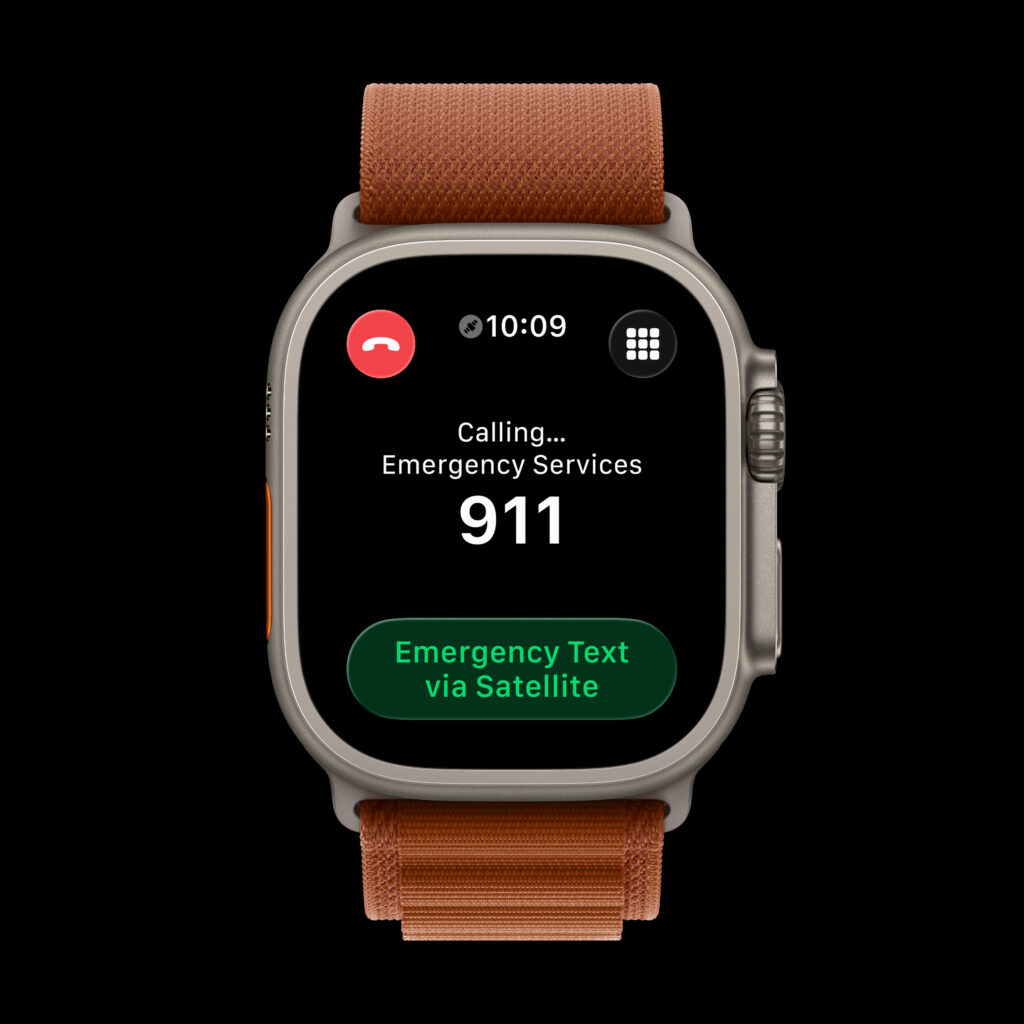
Another new addition to the Ultra 3 could be a big selling feature for back-country skiers, hikers, trail runners and other adventure-types who like to get well off the beaten track (read: way the heck out of cellular coverage). You can now take advantage of the Apple Watch Ultra 3’s two-way satellite communication capability that includes the ability to text, share location and send an Emergency SOS via satellite. (Messages via Satellite is only available in the US, Canada and Mexico at this point.) Find My via satellite can send location information to contacts every 15 minutes, too. Satellite communication features are free for two years with the Ultra 3, and Emergency SOS via satellite is included even without a cellular plan.
Real-Time with the Ultra 3
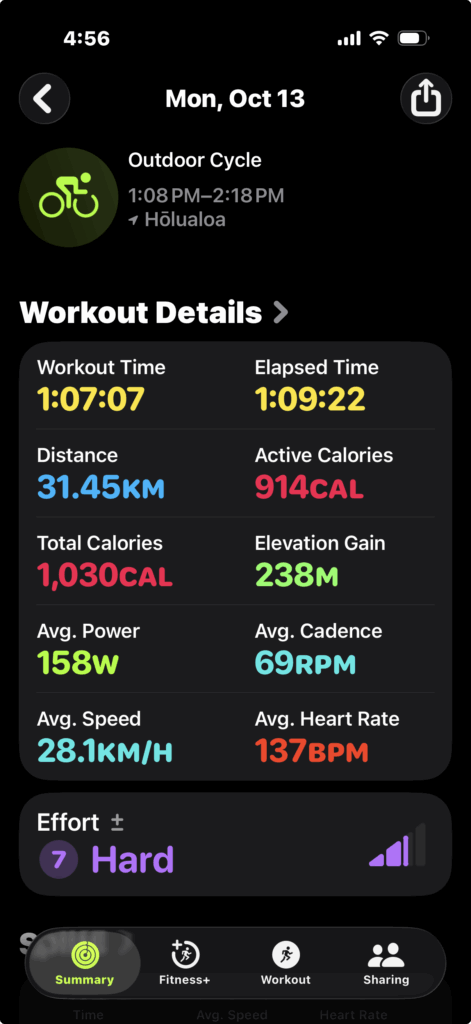
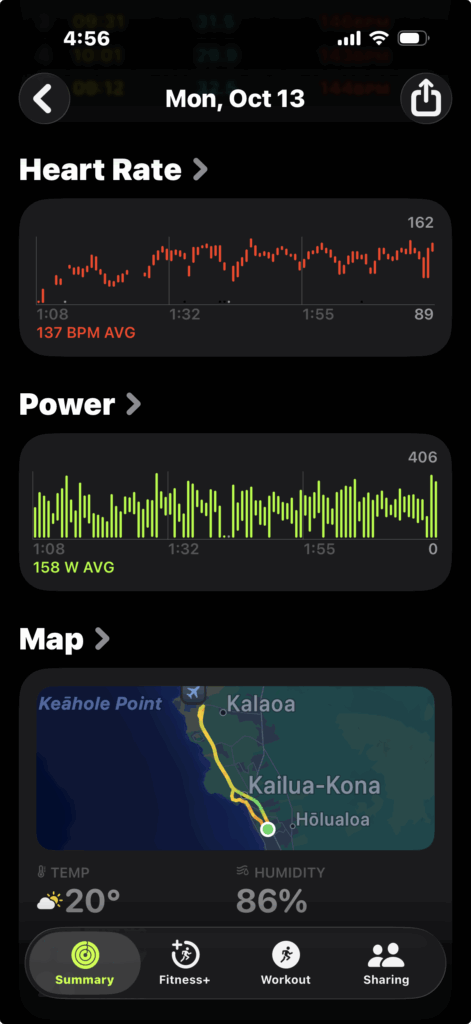
I’ve been quite comfortable using the Ultra line up for training for years. Synced to my Garmin pedals, I’ve been able to track cycling data (above you’ll see some of the data from a bike workout I did while covering the IRONMAN World Championship in Kona earlier this year), and the watch has ably tracked my run and swim workouts. As a coach I have a number of athletes who appreciate the ability to transfer my structured workouts from Training Peaks to their Apple Watch, and then I can analyze their workout data once they’re all done. That’s exactly the same process that my athletes using Garmin watches enjoy, too. I don’t think the Apple Watch Ultra 3 does this better than the top of the line Garmin, but gone are the days when you had to give up on the smartwatch features you loved in the Apple Watch to be able to get all your training data.
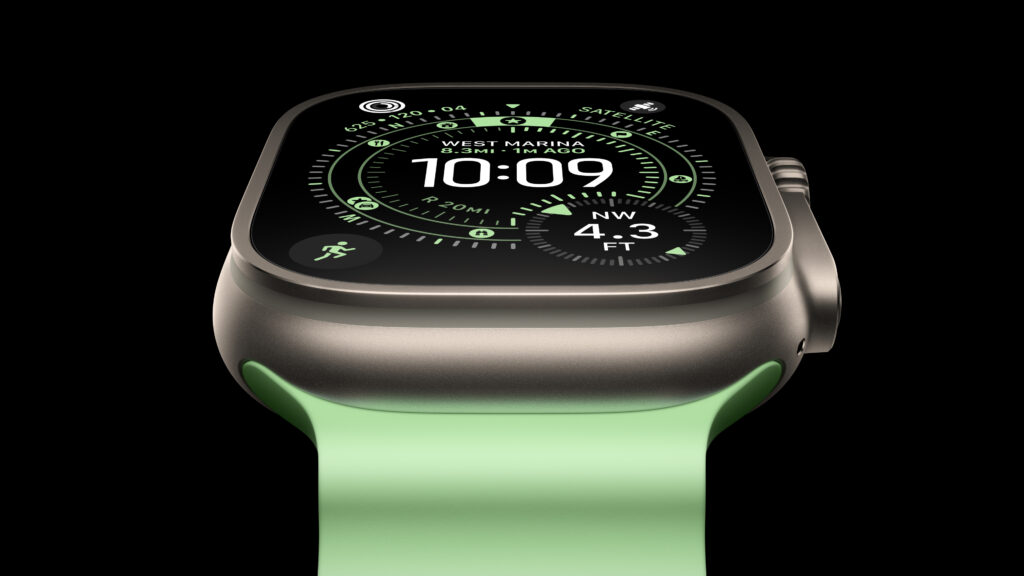
I do notice the brighter screen, especially when viewed from an angle, and I definitely notice the extended battery life. With the Ultra and the Ultra 2, I pretty much resigned myself to sitting the watch on its charger at some point every day. With the Ultra 3 I am much more comfortable stretching things to an extra day. The upside of all that is that I’m happy to wear the Ultra 3 at night to track my sleep data (as opposed to leaving it on a charger every night), and I’m impressed by the new Sleep Score feature. While the various Apple Watch series of watches has been able to track sleep data for years, measuring health metrics including heart rate, wrist temperature, blood oxygen and respiratory rate, recent versions have been able to even track sleep apnea. Sleep Score tracks duration, bed time consistency, time spent in the various sleep stages and how often you get up to provide a metric of sleep quality. Again this is something that’s been available on Garmin devices for a while, and I haven’t done enough research to declare that one ecosystem does it better than the other.
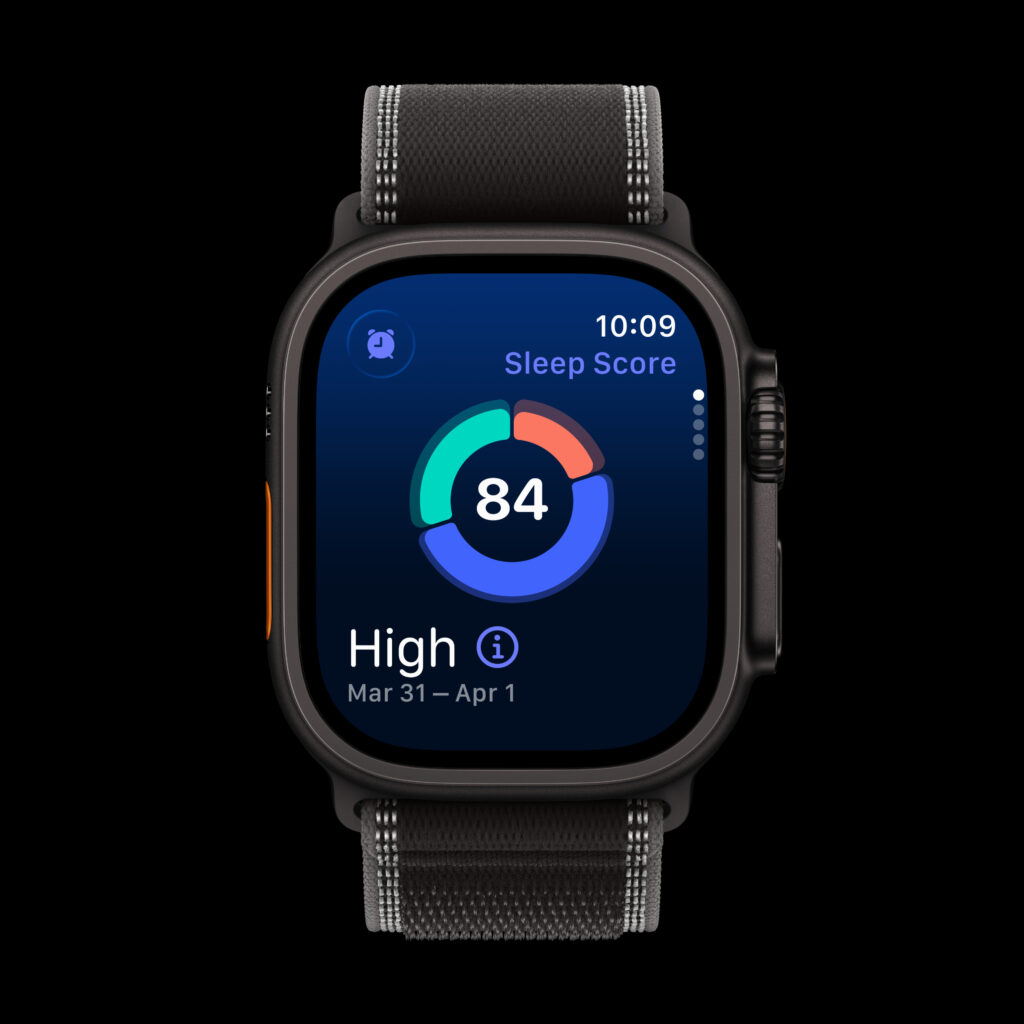
Many of the new features (other than the extended battery life and the brighter screen) are available on an Ultra 2 that’s been updated to watchOS 26, so if you already have an Ultra 2 and are happy with it, the Ultra 3 might not be worth the upgrade.
If you’re looking for a new watch and are keen to remain in the Apple ecosystem, the Ultra 3 might be just what you’re looking for. If charging your watch every day or two is going to drive you nuts, this is most definitely not the watch for you. If you don’t have an iPhone, you’re not going to be interested in this watch, either – and you have lots of other great options out there.
The Apple Watch Ultra 3 is a viable option for even the most serious triathletes, though, who are comfortable in the Apple ecosystem and want to add the Apple Watch to their collection that likely includes an iPhone and a MacBook.




Do it sample HR values at 1s intervals yet?
@trailblazery I am not sure on that front - I don’t believe you can change the sample rate (as you can on Garmin watches). I am checking into that, though, and will get back to you once I find out. (I’m also digging into what the interval is.)
i quickly looked into it after i posted, from DCRainmaker, it seems likely it is refreshing at 1hrz, but i could not confirm 100%
Short answer for me - not quite yet..
I wear both a AWU and a Garmin Fenix 8 Pro all the time (apart form sleep when its just the Garmin), and have done so for the past couple of years - and regularly ‘run’ with them both active to see how the new watchOS updates work - the AW is SO close to being everything you need, but sadly still a world apart from what I use.
I suffer with very sweaty hands out here in the Spanish sun and I find the AW almost impossible to actively use (change screen, changing music etc) while running due to the touch screen being unresponsive to my swipes and the crown being too easy to rotate. All it’s missing is dedicated up/down buttons - if it had them, I could probably live with the other shortcomings compared to Garmin from a training perspective.
Functionally in terms of connected services (phone, music, messaging etc) - Garmin’s offerings even with the new Pro model are a joke for the premium they want per month, compared to the AW (which was the original reason why I wear both) - so it wouldn’t take much for Apple to displace Garmin at the top I feel.
Yes, I can confirm that all the data during a workout is at 1Hz sample rate. I have checked it with walking, running and cycling activities, using the data uploaded from Apple Health to Strava
Sorry, it’s a thing now
Depending on what app you use for training on the AWU, you can use Siri to really close the gap if you can’t use the touchscreen for whatever reason. If you have it setup that you can use the Digital Crown to activate Siri, then just say, “Siri, end my workout” or “Siri, play DragonForce” and you don’t need to use buttons at all.
In general, Apple is making it harder and harder. The AWU3 is, in general, as accurate or more accurate for pace, distance, and HR. It’s more reliable for counting laps in the pool. The screen is easier to read in any environment except for extremely bright settings (beach, ski slopes). WorkOutDoors is, in some ways, superior to Garmin’s workout screens. Sigh.
I prefer the Fenix 8 for the vibes and a few of the niche features, but it’s crazy how good AWU is getting, and they’ve kept the price at $800 for 4 years now, while Garmin’s prices are going to the moon. Dunno. I’m keeping the AWU3 in the drawer for a while to see what watchOS 27 brings. Good chance it could push my Fenix out of the nest.